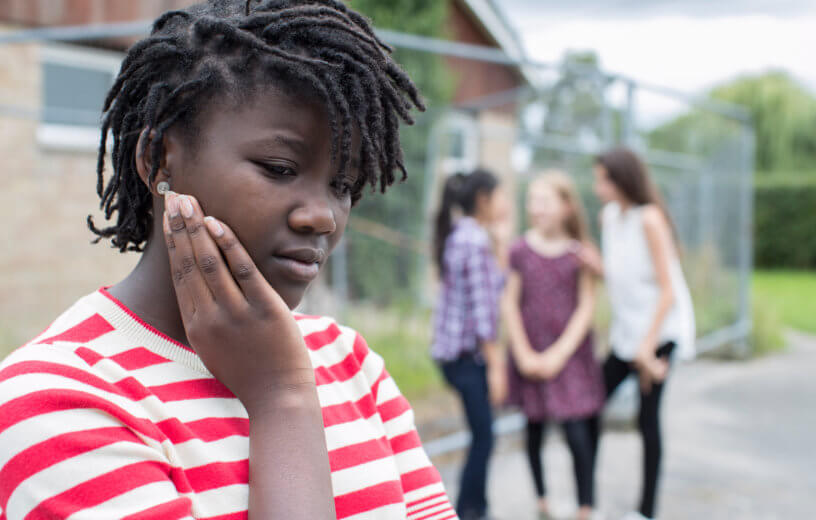🔑 Key Findings:
- Having a ‘thick skin’ may be hiding the health impact of a tough childhood
- Minority children who are resilient still had significant health issues
- Kids as young as 10 can show signs of wear and tear
URBANA, Ill. — Children who excel at school and display good behavior despite difficult circumstances or a disadvantaged background often receive praise for their “thick skin” and resilience. However, a new study finds that rising above adversity may still lead to health problems among minority youths. Scientists at the University of Illinois Urbana-Champaign have uncovered evidence of a clear health toll among outwardly resilient children from disadvantaged backgrounds. This includes higher risk of inflammation, immune cell aging, metabolic disorders, and chronic disease.
“In the past decade, researchers have observed a phenomenon termed ‘skin-deep resilience.’ Historically, youth from disadvantaged backgrounds who ‘beat the odds’ were assumed to have universally positive outcomes. They are achieving academically, avoiding problematic behaviors, and scoring well on psychological measures,” explains lead author Allen Barton, an assistant professor in the Department of Human Development and Family Studies.
“Outwardly these youth are seen as resilient, but these emerging ‘skin-deep resilience’ findings suggest this success may come at a cost to their physical health,” adds Barton, who is also an Illinois Extension specialist in the College of Agricultural, Consumer and Environmental Sciences (ACES) at U. of I, in a media release.
Skin-deep resilience is especially prevalent in samples of racial and ethnic minority youth. Importantly, these individuals are more likely to deal with various stressors such as discrimination, disadvantaged neighborhoods, and socioeconomic risk.
Prior efforts to explore this skin-deep resilience phenomenon have uncovered evidence of an unhealthy toll among resilient young adults from disadvantaged backgrounds. For this study, however, Prof. Barton and his colleagues wondered if physiological changes could perhaps be detected in high-striving minority youth at even younger ages (early adolescence).
“For 10-year-olds, trying to find indicators of wear and tear in the body can be challenging because youth at this age generally are not manifesting any clinical or subclinical symptoms yet,” the researcher says. “Given that, in the current study, we examined whether accelerated puberty development could be one physiological change that might serve as an indicator of the skin-deep resilience pattern. Prior research has suggested that stressful conditions can result in earlier onset of puberty, as well as faster progression.”

The researchers used data from the Adolescent Brain Cognitive Development study, a large-scale project conducted by the National Institutes of Health, to conduct this project. In all, that dataset included 11,000 kids and their parents hailing from 21 locations across the United States. Researchers analyzed baseline data collected from nine and 10-year-olds, in addition to further follow-up assessments held one year later. Ultimately, they used a sample of 7,712 participants (66% White, 13.4% Black, and 20.6% Hispanic) for this study.
As predicted, high executive functioning (cognitive processes related to planning, problem-solving, and goal direction) seen in a child at baseline displayed a link with positive outward adjustment such as fewer conduct problems and rule-breaking behaviors one year later among Black or Hispanic youths. However, for ethnic and racial minority youth living in more disadvantaged neighborhoods, high executive functioning was also associated with accelerated pubertal development.
This same trend did not hold true for White youths. Study authors theorize this suggests additional stressors unique to ethnic and racial minority youth are more likely to result in a higher susceptibility to worsened physiological outcomes.
“Our findings lend support to the skin-deep resilience hypothesis for minority youth at this developmental stage. Early adolescents with high executive function that were residing in disadvantaged neighborhoods seemed to be doing really well with indices of behavioral adjustment over time, but their regulated efforts may be taking a toll on their body,” Prof. Barton explains.
In conclusion, researchers stress these findings are ultimately preliminary. The team needs more evidence regarding the physiological consequences of striving to be resilient, especially from a young age.
“We need to think about the importance of promoting resilience at multiple levels. Particularly for youth from disadvantaged backgrounds, things like self-regulation and striving are typically encouraged and prioritized because of their associations with positive psychological and behavioral outcomes. However, such striving can also operate as a double-edged sword that exacts a physiological toll on youth,” Prof. Barton concludes. “We need to ensure these youth have individual, family, and community sources of support that allow them to be resilient above and beneath the skin.”
The study is published in the Journal of Youth and Adolescence.
You might also be interested in:
- The secret of Novak Djokovic’s record-breaking tennis success – is his mental resilience
- Experiencing discrimination throughout life linked to greater dementia risk
- Racial discrimination in the mortgage market hasn’t waned over past 4 decades
